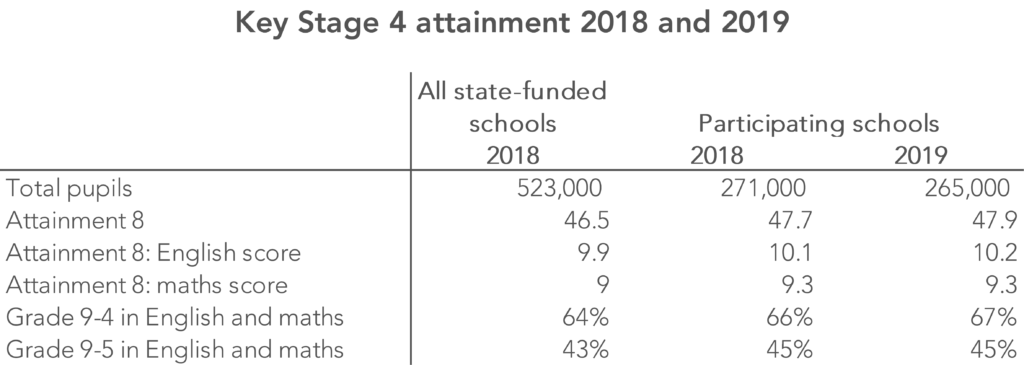This blogpost is part of the 2019 FFT Aspire Key Stage 4 Early Results Service. The service allows schools to upload their KS4 results and then access an early analysis of their results. Participating schools that uploaded their results by 3 September can download their reports in FFT Aspire now. Schools can also continue to upload their results until Friday 6 September.
Well over half of all secondary schools – 1,700 – have so far participated in FFT’s Key Stage 4 Early Results Service.
Does the data arising from it give us any clues about national attainment in 2019?
FFT Aspire users
If you are a school using FFT Aspire, download your report now.
Not an FFT Aspire user?
A slight improvement in national attainment
The early signs are that there has been a slight improvement in national attainment.
Schools which participated in the project tended to have slightly above average attainment in 2018. This is mainly because special schools are under-represented in our sample.
Nonetheless, if we compare the 2019 attainment of participating schools to their published 2018 data, it looks as if there has been a small improvement in overall attainment – shown in the table below.
But, at least in the first few years of the reformed GCSEs, we wouldn’t expect to see too much improvement.
Has the disadvantage gap closed?
In our analysis of last year’s early results data, we were rather surprised to see the gap in attainment and progress for disadvantaged pupils widen, following several years of narrowing. This was borne out in subsequent analysis by the Department for Education itself and by the Education Policy Institute.
The early signs are that things might have improved this year.
If we look at schools in our sample with published 2018 data for both disadvantaged and non-disadvantaged pupils, we see a slight narrowing in both the Attainment 8 and Progress 8 gap – see the table below.
Although only a small reduction given the size of the gap, we perhaps have to think about it in terms of the size of the gap schools have any influence over.
Given that there is a disadvantage gap in attainment when pupils enter the education system, it seems unrealistic to expect it to have levelled the playing field by the time they turn 16. Perhaps the best we can hope is that they tilt it slightly more in the favour of disadvantaged pupils. In other words, there is always likely to be an attainment gap unless we do society differently.
Want to stay up-to-date with the latest research from FFT Education Datalab? Sign up to Datalab’s mailing list to get notifications about new blogposts, or to receive the team’s half-termly newsletter.








Leave A Comment